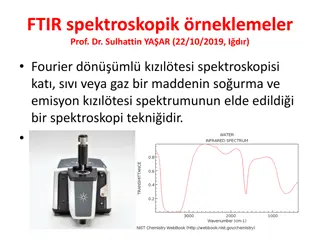Overview of Herbicides Classification and Groups
Herbicides are classified based on their chemical nature into inorganic and organic types. Inorganic herbicides, such as arsenic acid and copper sulfate, do not contain carbon atoms, while organic herbicides, like glyphosate and 2,4-D, contain carbon atoms. The classification includes various groups
4 views • 15 slides
Phenolic Resin
Phenolic resins, the oldest synthetic polymer, are produced by reacting phenols with aldehydes, primarily phenol and formaldehyde. This process was invented in 1907 and has since been crucial in manufacturing durable molded parts. Phenols, aromatic compounds with unique properties, play a key role i
1 views • 24 slides
Understanding the Binding Role of Alcohols and Phenols in Drug Molecules
The role of alcohols and phenols in drug molecules is crucial as they are frequently involved in hydrogen bonding interactions. By creating analogues with modified functional groups, such as ethers and esters, the importance of specific groups can be determined. The presence or absence of hydrogen b
2 views • 20 slides
Understanding Phenols: Identification and Chemical Reactions
Phenols are organic compounds containing a hydroxyl group attached to an aromatic ring. This experiment focuses on identifying phenols through tests like the ferric chloride test, bromine water test, and phthalein test. By observing color changes and reactions, different phenols such as hydroquinone
1 views • 10 slides
Fourier Transform Infrared (FTIR) Spectroscopy Examples by Prof. Dr. Sulhattin YAŞAR
Fourier Transform Infrared (FTIR) spectroscopy is a technique used to obtain the absorption and emission spectra of solid, liquid, or gas substances. This content provides characteristic absorption peaks for various functional groups, such as alkane, alkyl, alkenyl, alkynyl, aromatic compounds, alco
0 views • 15 slides
Study on Phytochemical Nature and Biological Activities of Bruguiera cylindrica Leaves
Investigation of phytochemical constituents and biological properties such as thrombolytic, membrane stabilizing, and cytotoxic activities of Bruguiera cylindrica leaves. Phytochemical screening revealed the presence of carbohydrates, glycosides, phenols, tannins, proteins, gums, and mucilages. The
0 views • 16 slides
Factors Affecting Polyphenol Oxidase Activity in Enzyme Reaction
Polyphenol oxidase (PPO) is a copper-containing enzyme with an optimal pH of 6.7 that catalyzes the oxidation of phenols, leading to color changes like browning in fruits and potatoes. This experiment aims to demonstrate PPO activity, its chemical nature, substrate specificity, and the effects of te
0 views • 18 slides
Understanding Alcohols: Classification, Nomenclature, and Uses
Alcohols are organic compounds with an -OH functional group attached to a carbon atom. They are classified as primary, secondary, or tertiary based on the carbon the -OH group is bonded to. The IUPAC nomenclature for alcohols involves changing the ending of an alkane to -ol. Alcohols like methanol,
0 views • 11 slides







